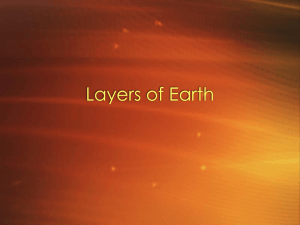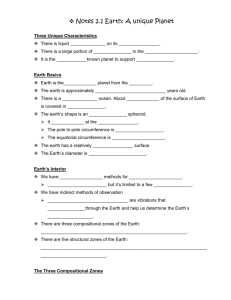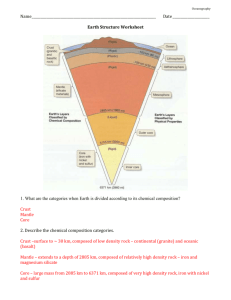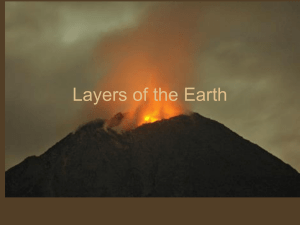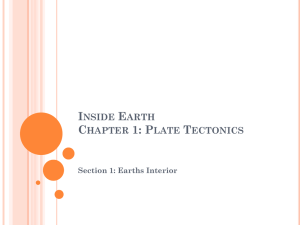File
advertisement
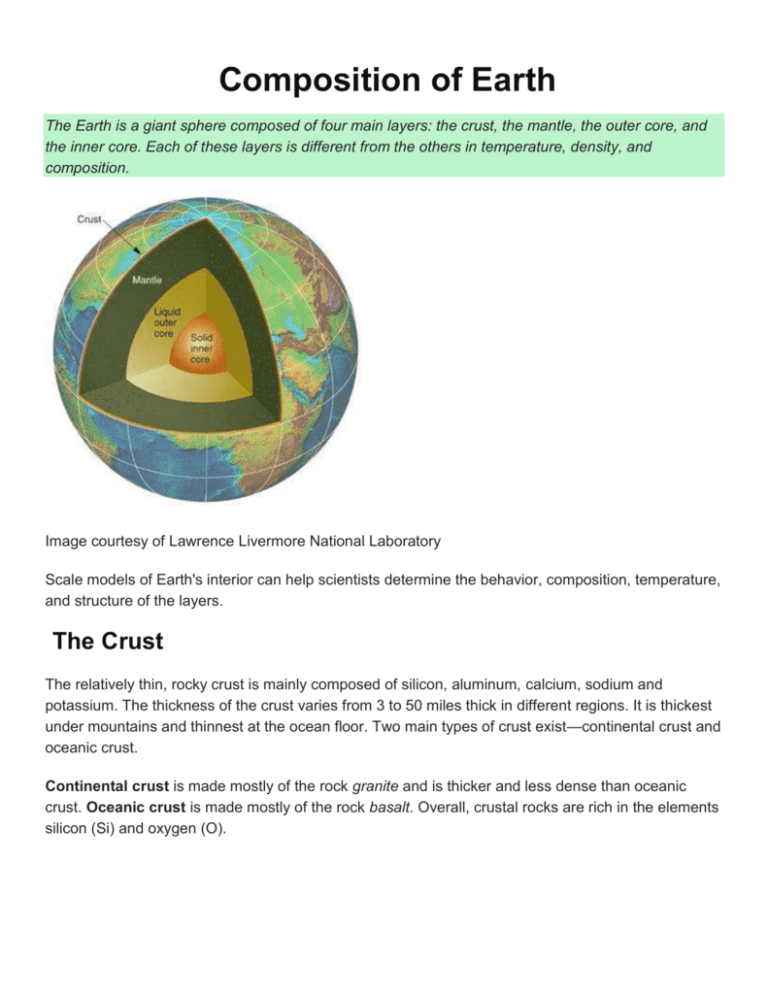
Composition of Earth The Earth is a giant sphere composed of four main layers: the crust, the mantle, the outer core, and the inner core. Each of these layers is different from the others in temperature, density, and composition. Image courtesy of Lawrence Livermore National Laboratory Scale models of Earth's interior can help scientists determine the behavior, composition, temperature, and structure of the layers. The Crust The relatively thin, rocky crust is mainly composed of silicon, aluminum, calcium, sodium and potassium. The thickness of the crust varies from 3 to 50 miles thick in different regions. It is thickest under mountains and thinnest at the ocean floor. Two main types of crust exist—continental crust and oceanic crust. Continental crust is made mostly of the rock granite and is thicker and less dense than oceanic crust. Oceanic crust is made mostly of the rock basalt. Overall, crustal rocks are rich in the elements silicon (Si) and oxygen (O). Image courtesy of Wikipedia Commons. This cross section above shows that continental crust (grey area labeled as "1") is thicker than oceanic crust (black area below the ocean, which is labeled as "2"). The portion of the diagram labeled as "3" is part of the mantle. The blue area is ocean water. The Mantle The next layer down below the crust is the Earth's mantle. The mantle is a thick layer of hot, liquid rock called magma. It is mainly composed of silicon, oxygen, magnesium, iron, aluminum, and calcium and is about 1,800 miles thick. The mantle gets warmer with depth: the outside of the mantle is about 1,600 °F, but towards the innermost part of the mantle, the temperature is about 4,000 to 6,700 °F. The mantle's density ranges from 3.4 g/cm3 to 5.4 g/cm3 depending upon the distance from the surface. The mantle contains most of the mass of the Earth. The Outer Core The core of the Earth is divided into the inner and outer core. The outer core is made of extremely hot liquid iron and nickel. The temperature in the outer core is about 7,200 to 9,032 °F. The density of the outer core is between 10 g/cm3 and 12.3 g/cm 3, and it is about 1,425 miles thick. The Inner Core The inner core is composed of an incredibly hot solid iron-nickel core that is about 750 miles in radius. The inner core remains solid because it is under such extreme pressure. The inner core may have a temperature up to about 13,000 °F, which is hotter than the surface of the Sun. The average density of the inner core is about 15g/cm3.



